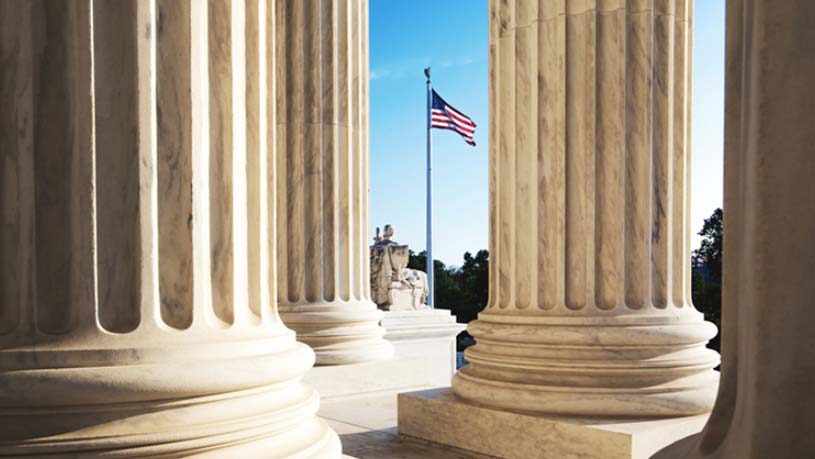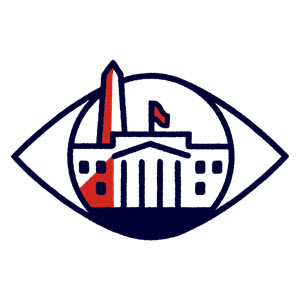IRS Issues Final Regulations on SECURE 2.0 Catch-Up Provisions
Part of a series | SECURE 2.0 Act Insights

Final regulations were recently issued to implement the Act's "Rothification" requirements. Below we summarize key provisions.
Highlights
Impacted Employers: Employers offering 401(k) or a similar workplace retirement plan.
Effective Date: The final regulations confirm that these rules will generally go into effect in 2026. Review the details below.
Summary: The Internal Revenue Service (IRS) recently issued final regulations that provide guidance for retirement plan catch-up contributions reflecting statutory changes under several provisions of the SECURE 2.0 Act of 2022 ("SECURE 2.0" or "Act").
Next Steps: Work with your retirement plan custodian and legal counsel to review how the final regulation applies to your plan. Prepare and adopt necessary plan amendments by the December 31, 2026 SECURE 2.0 amendment deadline. Plan sponsors that currently offer catch-up contributions but do not offer Roth contributions must add a Roth contribution feature to enable "high wage earners" to make catch-up contributions.
Background
Historically employers may offer participants who are age 50 or older the opportunity to defer additional compensation (more than the standard annual limit, which is $23,500 for 2025) in the form of a catch-up contribution ($7,500 in 2025) to their retirement accounts in certain retirement plans including 401(k), 403(b) and 457(b) plans.
The Act requires employers that offer catch-up contributions to treat the catch-up contributions made by "high wage earners" as post-tax Roth contributions ("Rothificaton"). This requirement applies to most retirement plans.
It does not apply to SARSEP, SIMPLE IRA, Starter K or Safe Harbor 403(b) plans.
A "high wage earner" under the Act is an employee whose wages from the employer sponsoring the plan during the preceding calendar year exceeded $145,000 (indexed annually). The wage threshold is based on Social Security (FICA) wages paid to the individual by the employer sponsoring the plan.
The Final Regulations
Final regulations were recently issued to implement the Act's "Rothification" requirements. Below we summarize key provisions.
Determining when the $145,000 Threshold Is Met - Aggregation of Wages for Related Employers
As mentioned above, treatment of catch-up contributions are treated differently depending on whether a participant's income exceeds a designated threshold. The Rothification catch-up requirement applies to a participant whose annual FICA wages "from the employer sponsoring the plan" exceed $145,000 for the preceding year.
The final regulations allow the employer sponsoring the plan to combine the wages of other related employers (who also employ the employee participant) using a common paymaster to determine if the $145, 000 threshold is met. Briefly stated, a common paymaster is an entity within the group of related employers that is designated to handle payroll and taxes for all related companies on a combined basis.
Counting a High Wage Earner's Regular Roth Contributions Toward the Roth Catch-up Requirement
For plans that use concurrent elections (meaning the plan permits participants to make separate elections for regular and catch-up deferrals during each payroll), the plan may automatically deem the separate catch-up election as Roth. This is the case even if as of the end of the year, those contributions turn out not to be catch-up contributions (the participant's total deferrals have not exceeded the annual contribution limit, $23,500 for 2025).
Example
A participant who is over age 50 with prior year wages exceeding $145,000 elects to defer an annual total of $14,000 pre-tax and $5,000 as catch-up.
Under the tax code, catch-up contributions are defined as being in excess of other plan limits as of the end of the plan year. Therefore, the separate, concurrent $5,000 deferral for this participant wouldn't normally be considered catch-up since they did not exceed the annual contribution limit. However, under the final regulations the plan may consider the separate $5,000 deferral as a Roth catch-up election even though the participant never exceeded their annual pre-tax limit of $23,500.
For plans that use a single election, those plans generally "spill over" regular pre-tax to catch-up once the annual contribution limit has been reached. The final regulations permit spillover as deemed Roth catch-up elections either (1) once the employee's year-to-date pre-tax deferrals reach the annual limit, or (2) once the employee's year-to-date aggregate (pre-tax and Roth) deferrals exceed the annual limit.
Super Catch-Up Contributions for Participants Age 60-63
IRS confirmed again that a plan is not required to offer participants age 60-63 the opportunity to make enhanced (or "super") catch-up contributions, as further explained below. If the plan does provide for these enhanced contributions, it must generally offer them to all participants eligible for catch-up contributions. The final regulations include exceptions to the requirement to offer them to all participants. The plan may exclude employees subject to a collectively bargained agreement (CBA) and non-resident aliens.
SIMPLE IRA Limits
The Savings Incentive Match Plan for Employees (SIMPLE) IRA employee contribution limit for 2025 is $16,500 and the catch-up limit for those age 50 and over is $3,500. Those age 60-63 can contribute $5,250 as a "super" catch-up contribution.
SECURE 2.0 increases the contribution limits for a SIMPLE plan sponsored by an employer with 25 or fewer employees to 110% of the standard limits. For those employees, the contribution limit is $17,600 and the catch-up limit is $3,850 for those age 50 and older.
The final regulations clarify that a SIMPLE plan that is eligible to offer the 10% increase to the regular catch-up contribution limit may instead permit employees attaining age 60 through 63 to contribute catch-up contributions up to the super catch-up limit. A SIMPLE plan cannot simultaneously provide for both the additional 10% and the super catch-up to apply to a participant. So, for those age 60-63 in 2025, the super catch-up would remain $5,250.
Treatment for Puerto Rico Retirement Plans
There are certain provisions specific to Puerto Rico based on differences in their tax code. The Puerto Rico tax code does not permit Roth contributions and the final regulations address this conflict. The regulations provide that a plan is automatically treated as complying with SECURE 2.0's catch-up requirements if it complies with the Puerto Rico Code relating to tax-qualified retirement plans. This provision applies until the Puerto Rico Code is amended to provide for Roth contributions.
Other Notable Provisions
Cannot Make All Catch-Up Contributions Roth
The final regulations state that a plan cannot make all catch-up contributions Roth. Specifically, non-high wage earners (e.g. an employee whose wages from the employer sponsoring the plan during the preceding calendar year does not exceed $145,000 (indexed annually) must have the opportunity to make catch-up contributions on a pre-tax basis.
Plans without a Roth Feature Permitted
The final regulations confirm that a plan does not need to allow for Roth contributions. In that case, however, high wage earners will not be permitted to make catch-up contributions.
To ensure that qualified retirement plans do not disproportionately favor highly compensated employees, the tax code establishes nondiscrimination standards that a plan can satisfy either by passing certain tests, known as nondiscrimination testing, on a regular basis or by adopting certain plan designs, known as safe harbors.
The regulations include a special rule regarding plan discrimination testing in the event that a plan doesn't permit high wage earners to make any catch-up contributions.
403(B) and 457(B) Catch-Up Rules
The final regulations confirm that the Roth catch-up mandate does not apply to the special catch-up contribution rules applicable to 403(b) and 457(b) plans.
Final Regulations Effective Date
The Roth Catch-Up Requirement is required to be implemented as of January 1, 2026. However, until January 1, 2027, a reasonable, good faith interpretation standard applies regarding administration and operation of the Roth catch-up requirement. Plan sponsors should consult with legal counsel as needed to help determine what might be considered a good faith interpretation. Later applicability dates are provided for plans maintained under a CBA and certain governmental plans.
As always, ADP will continue to keep you informed regarding any future related developments.
ADP Compliance Resources
ADP maintains a staff of dedicated professionals who carefully monitor federal and state legislative and regulatory measures affecting employment-related human resource, payroll, tax and benefits administration, and help ensure that ADP systems are updated as relevant laws evolve. For the latest on how federal and state tax law changes may impact your business, visit the ADP Eye on Washington Web page located at www.adp.com/regulatorynews.
ADP is committed to assisting businesses with increased compliance requirements resulting from rapidly evolving legislation. Our goal is to help minimize your administrative burden across the entire spectrum of employment-related payroll, tax, HR and benefits, so that you can focus on running your business. This information is provided as a courtesy to assist in your understanding of the impact of certain regulatory requirements and should not be construed as tax or legal advice. Such information is by nature subject to revision and may not be the most current information available. ADP encourages readers to consult with appropriate legal and/or tax advisors. Please be advised that calls to and from ADP may be monitored or recorded.
If you have any questions regarding our services, call 855-466-0790.
ADP, Inc.
One ADP Boulevard, Roseland, NJ 07068
adp.com
Updated on October 1, 2025



